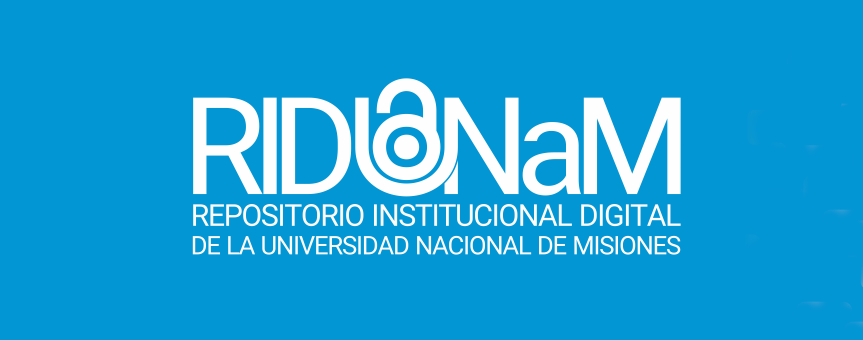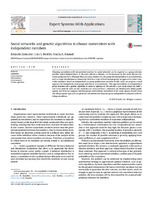| dc.creator | Zamudio, Eduardo | |
| dc.creator | Berdún, Luis Sebastian | |
| dc.creator | Amandi, Analía Adriana | |
| dc.date.accessioned | 2023-01-30T13:24:25Z | |
| dc.date.available | 2023-01-30T13:24:25Z | |
| dc.date.issued | 2016-01-01 | |
| dc.identifier.citation | Zamudio, E., Berdún, L. S., y Amandi, A. A. (2016). Social networks and genetic algorithms to choose committees with independent members. Expert Systems with Applications. Estados Unidos: Elsevier; 43(1), pp. 261-270. | es_AR |
| dc.identifier.issn | 0957-4174 | |
| dc.identifier.other | CCPI-CNyE-A-136 | |
| dc.identifier.other | 9451 | |
| dc.identifier.uri | https://hdl.handle.net/20.500.12219/4445 | |
| dc.description | Fil: Zamudio, Eduardo. Consejo Nacional de Investigaciones Científicas y Técnicas. Centro Científico Tecnológico (Tandil). Instituto Superior de Ingeniería del Software; Argentina. | es_AR |
| dc.description | Fil: Zamudio, Eduardo. Universidad Nacional del Centro (Buenos Aires). Instituto Superior de Ingeniería del Software; Argentina. | es_AR |
| dc.description | Fil: Verdún, Luis Sebastián. Consejo Nacional de Investigaciones Científicas y Técnicas. Centro Científico Tecnológico (Tandil). Instituto Superior de Ingeniería del Software; Argentina. | es_AR |
| dc.description | Fil: Verdún, Luis Sebastián. Universidad Nacional del Centro (Buenos Aires). Instituto Superior de Ingeniería del Software; Argentina. | es_AR |
| dc.description | Fil: Amandi, Analía Adriana. Consejo Nacional de Investigaciones Científicas y Técnicas. Centro Científico Tecnológico (Tandil). Instituto Superior de Ingeniería del Software; Argentina. | es_AR |
| dc.description | Fil: Amandi, Analía Adriana. Universidad Nacional del Centro (Buenos Aires). Instituto Superior de Ingeniería del Software; Argentina. | es_AR |
| dc.description.abstract | Choosing committees with independent members in social networks can be regarded as a group selection problem where independence, as the main selection criterion, can be measured by the social distance between group members. Although there are many solutions for the group selection problem in social networks, such as target set selection or community detection, none of them have proposed an approach to select committee members based on independence as group performance measure. In this work, we propose a novel approach for independent node group selection in social networks. This approach defines an independence group function and a genetic algorithm in order to optimize it. We present a case study where we build a real social network with on-line available data extracted from a Research and Development (R&D) public agency, and then we compare selected groups with existing committees of the same agency. Results show that the proposed approach can generate committees that improve group independence compared with existing committees. | en |
| dc.format | application/pdf | |
| dc.format.extent | 1.204 MB | |
| dc.language.iso | eng | en |
| dc.publisher | Elsevier | en |
| dc.relation | info:eu-repo/semantics/altIdentifier/urn/https://www.sciencedirect.com/science/article/abs/pii/S0957417415005059 | |
| dc.rights | info:eu-repo/semantics/openAccess | |
| dc.rights.uri | http://creativecommons.org/licenses/by-nc-sa/4.0/ | |
| dc.subject | Committee | en |
| dc.subject | Group selection | en |
| dc.subject | Independence | en |
| dc.subject | Social network | en |
| dc.subject | Genetic algorithm | en |
| dc.title | Social networks and genetic algorithms to choose committees with independent members | en |
| dc.type | info:eu-repo/semantics/article | |
| dc.type | info:ar-repo/semantics/artículo | |
| dc.type | info:eu-repo/semantics/publishedVersion | |




